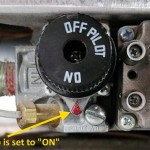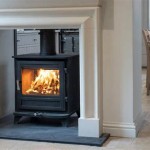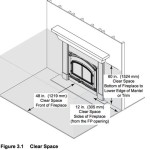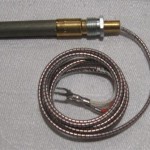Fireplace No Mantle: A Study in Modern Hearth Design
The traditional fireplace, often envisioned with a prominent mantelpiece, has undergone a significant transformation in contemporary design. The "fireplace no mantle" aesthetic represents a deliberate shift towards minimalism, focusing on clean lines, unobstructed views of the fire, and integration with the surrounding architectural space. This approach prioritizes the fireplace itself as the central design element, eliminating the mantel's conventional function as a display shelf or decorative focal point. Exploring the nuances of this design choice requires consideration of its underlying principles, aesthetic implications, practical considerations, and the types of fireplaces best suited to this style.
The absence of a mantel opens a field of possibilities for fireplace design, moving beyond the traditional constraints of a defined shelf and its associated ornamentation. This allows for greater freedom in selecting materials, textures, and overall form. The fireplace can become a seamless extension of the wall, or a bold statement that draws the eye without the need for added embellishments. The lack of a mantel also encourages a focus on the surrounding wall treatment. This can involve using a variety of materials such as stone, tile, wood paneling, or even simply paint to create a visually striking backdrop for the firebox.
The Appeal of Minimalist Design
One of the primary drivers behind the "fireplace no mantle" trend is the growing popularity of minimalist design principles. Minimalism emphasizes simplicity, functionality, and the removal of unnecessary elements. In the context of a fireplace, this translates to a clean, uncluttered aesthetic that allows the warmth and beauty of the fire to take center stage. Removing the mantel helps to declutter the visual space, creating a sense of calm and tranquility. This is particularly appealing in modern homes where open-plan living and a focus on natural light are paramount.
Furthermore, a fireplace without a mantel often aligns with contemporary architectural styles that favor clean lines and geometric forms. The absence of a traditional mantelpiece reinforces this aesthetic, creating a cohesive and harmonious design. This approach is often seen in homes designed with a Scandinavian or mid-century modern influence, where simplicity and functionality are key design elements.
The minimalist approach also extends to the materials used in the fireplace surround. Instead of ornate carvings or elaborate detailing, the focus is on using high-quality materials with clean, simple finishes. This can include materials such as polished concrete, sleek metal, or natural stone with minimal texture. The goal is to create a surface that is visually appealing without being distracting, allowing the fire to remain the focal point.
Aesthetic and Design Considerations
Designing a fireplace without a mantel requires careful consideration of the surrounding space and the overall aesthetic goals. The size and shape of the fireplace, the materials used, and the surrounding wall treatment all play a crucial role in creating a successful design. One key consideration is the scale of the fireplace in relation to the room. A large fireplace without a mantel can be visually imposing, while a small fireplace may appear insignificant without the added presence of a mantelpiece. It's important to strike a balance that complements the size and proportions of the room.
The choice of materials is also critical. Materials should complement the overall design style of the home and create a visual harmony with the surrounding decor. For example, a fireplace surrounded by natural stone may be a good choice for a rustic or contemporary home, while a fireplace with a sleek metal surround may be better suited to a modern or industrial-style space. The color and texture of the materials should also be carefully considered to ensure that they create the desired effect.
The surrounding wall treatment is another important factor to consider. Without a mantel, the wall becomes an integral part of the fireplace design. This area can be used to create visual interest and add depth to the space. Options include using a contrasting paint color, installing textured wall panels, or creating a focal point with artwork or decorative lighting. The goal is to create a backdrop that enhances the fireplace without overpowering it.
Another area to consider is the integration of technology. Modern fireplaces often include features such as remote control operation, adjustable flame settings, and built-in entertainment systems. These features can be seamlessly integrated into the fireplace design without the need for a traditional mantelpiece. For example, a television can be mounted above the fireplace, creating a unified entertainment center. However, care must be taken to ensure that the television is positioned at a comfortable viewing height and that it does not detract from the aesthetic appeal of the fireplace.
Practical Implications and Fireplace Types
While the "fireplace no mantle" aesthetic offers numerous design advantages, it also presents certain practical considerations. One key concern is heat management. A traditional mantelpiece serves as a barrier, preventing heat from rising directly onto the wall above the fireplace. Without a mantel, the wall may be subject to higher temperatures, which could potentially damage paint, wallpaper, or other wall coverings. To mitigate this risk, it's important to choose a fireplace with adequate insulation and to ensure that the surrounding wall is made of heat-resistant materials.
Another practical consideration is the lack of a surface for displaying decorative items. A mantelpiece traditionally provides a convenient space for displaying photos, artwork, and other personal items. Without a mantel, alternative display solutions must be found. This can involve using shelves, wall-mounted display cases, or other creative storage solutions. The key is to find a way to display these items without cluttering the space or detracting from the minimalist aesthetic of the fireplace.
The type of fireplace also plays a significant role in determining whether a mantel is necessary or desirable. Certain types of fireplaces are better suited to the "no mantle" approach than others. For example, linear fireplaces, which are characterized by their long, horizontal shape, often look particularly stunning without a mantelpiece. Their streamlined design and unobstructed view of the flames make them a natural fit for minimalist spaces. Similarly, contemporary gas fireplaces with sleek, modern designs often benefit from the absence of a mantel, which allows their clean lines to shine through.
Electric fireplaces are another popular choice for homes without mantles. These fireplaces are typically designed with a minimalist aesthetic and can be easily mounted directly onto the wall. They offer a convenient and energy-efficient way to add warmth and ambiance to a room without the need for a traditional chimney. Furthermore, they produce minimal heat, reducing the risk of damage to the surrounding wall.
Wood-burning fireplaces, while still popular, may require more careful consideration when designing without a mantel. The higher heat output of wood-burning fireplaces can pose a risk to the surrounding wall, necessitating the use of heat-resistant materials and adequate insulation. It's also important to ensure that the fireplace meets all local building codes and safety regulations.
In conclusion, the "fireplace no mantle" design represents a deliberate choice that emphasizes minimalist aesthetics, clean lines, and a focus on the fire itself. While it requires careful consideration of practical implications and appropriate fireplace types, the resulting design can be a stunning and sophisticated addition to any modern home. The absence of a mantel allows for greater freedom in material selection, wall treatment, and overall design, ultimately creating a space that is both visually appealing and functionally efficient.

Modern Fireplace Inspiration No Mantle Required

No Hearth Mantle But Tv Too High Contemporary Living Room Fireplace Design Stone Designs

Create A Cozy Fireplace Vibe Even Without Mantle

Create A Cozy Holiday Fireplace Without Mantle
:strip_icc()/72.007_62-7d5eda56975e49fa8f785c07765ff551.jpg?strip=all)
50 Cozy Fireplace Ideas For Your Home

Modern Fireplace Inspiration No Mantle Required

No Mantle Problem At Home S Can Help

Modern Concrete Fireplace Diy Outdoor Gas Plans

Another Idea For Fireplace Brick Wall With No Mantle Decor
.jpg?strip=all)
How To Build Diy Movable Electric Fireplace Wall
Related Posts








